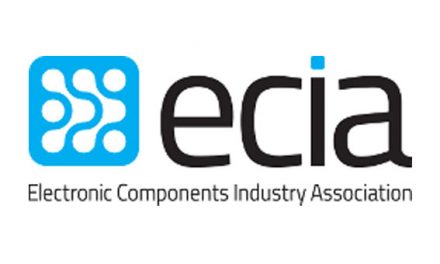Study Reveals Path to Recovery in the Global Medical Device Supply Chain
Pandemic Prompts Supply Chain to Focus on Reducing Risk, Building Resilience; Concerns Remain About Data Accuracy
Supplyframe announced the results of a medical device supply chain study, which indicates a gradual path to recovery for the MedTech industry over the next 18 months. The Supplyframe study captures a snapshot of where the industry stands, what concerns still remain, and how to best build capacity in response to the global COVID-19 pandemic.
This research is based on a survey of 200 supply chain professionals who work at medical device companies based in North America. Conceptial Inc. conducted the research on behalf of Supplyframe between August and September of 2020. The survey gathered supply chain professionals’ sentiment during a year in which global value chains have been profoundly impacted by the pandemic, and businesses in healthcare and manufacturing saw increased risk as a result.

“While the MedTech sector is among the hardest hit by the global pandemic, resulting in historic demand spikes and equipment shortages, it is also characterized by unparalleled innovation and collaboration from people around the world,” said Steve Flagg, CEO of Supplyframe. “With the pandemic still a reality in our day-to-day lives, it is clear that a new approach to supply chain planning and collaboration is required.”
The survey identified the top MedTech supply chain risks to be supply shortages (15%), lack of alternatives (12%) and delays in production issues (12%). Increasing the qualifications of multiple suppliers in the product design phase to improve supply chain resiliency was the most frequently cited strategy for mitigating these risks. To prepare for the next pandemic or natural disaster:
- 16% recommend a supply chain redesign to source locally
- 14% suggest improving qualifications of suppliers and the review process
- 13% advocate improving visibility of supplier inventory, capacity, and lead times
- 12% endorse restructuring supply chains with second sources
“Establishing a trusted network of suppliers who can quickly adapt to shifts in demand and availability is a critical theme of this study,” added Flagg. “New risks and uncertainty require new ways of making decisions, including looking outside of the traditional medical supply chain.”
The study further suggests that there is a significant disconnect between data available to make planning and manufacturing decisions, and the perception around the quality of available data. An overwhelming 92% of survey participants emphasized the importance of accurate COVID-19 case data to correctly forecast demand requirements and inform manufacturing efforts. Yet 84% expressed worries about how COVID-19 case data is being collected and reported in the U.S.
“Looking at these responses, it’s clear that organizations are seeing the importance of demand planning and de-risking the sourcing process,” said Flagg. “While these are sound options, they are merely goals without any kind of data or intelligence to empower real changes. Until we embrace this digital transformation, the industry will continue to face challenges.
“Procurement is often focused on reacting to supply challenges as they appear,” continued Flagg. “But medical equipment companies and other manufacturers that rely on semiconductor and electronics component suppliers can instead use data intelligence to get a broader view of what’s happening in their supply chains so they can build resilience into these solutions upfront.
“Supplyframe’s Design-to-Source Intelligence Platform provides billions of continuous demand, intent, supply, and risk signals within the supply chain. This provides engineering and procurement teams with the data intelligence they need to make the most informed decisions throughout the product lifecycle. As a result, manufacturing companies can lower the potential for shortages, increase their profitability, and enhance their longevity, resiliency and success.”
To review more survey results, check out our infographic based on this research.
About Supplyframe
Supplyframe aligns electronics demand with supply and brings new levels of resiliency to the global electronics value chain, with transformative, intelligence-based solutions to deliver insights at key decision points throughout the entire design-to-source product lifecycle. Leveraging billions of continuous signals of design intent, demand, supply, and risk factors, Supplyframe’s Design-to-Source Intelligence (DSI) Platform is the world’s richest intelligence resource for the electronics industry. Over 10 million engineering and supply chain professionals worldwide engage with our SaaS solutions, search engines and media properties to power rapid innovation and optimize in excess of $120 billion in annual direct materials spend. Supplyframe is headquartered in Pasadena, Calif., with offices in Austin, Belgrade, Grenoble, Oxford, San Francisco, Shanghai and Shenzhen. To join the Supplyframe community, visit supplyframe.com and follow us on Twitter, Instagram, and YouTube.













